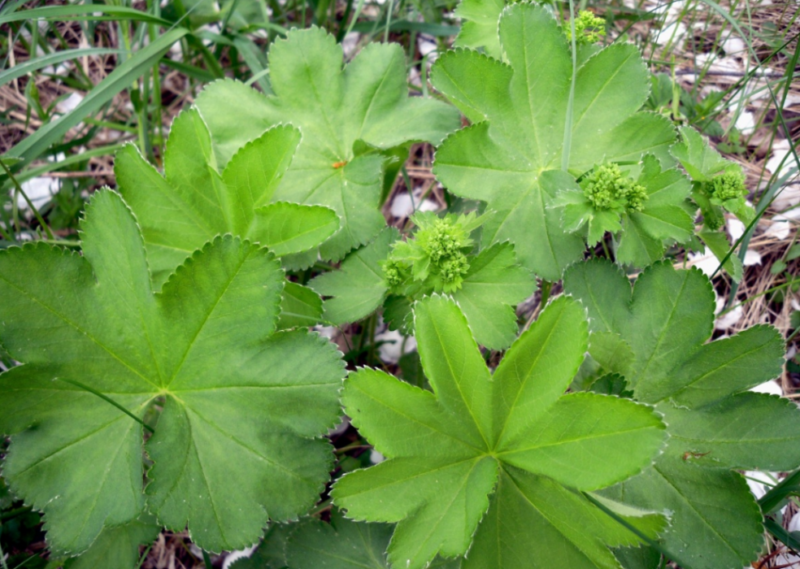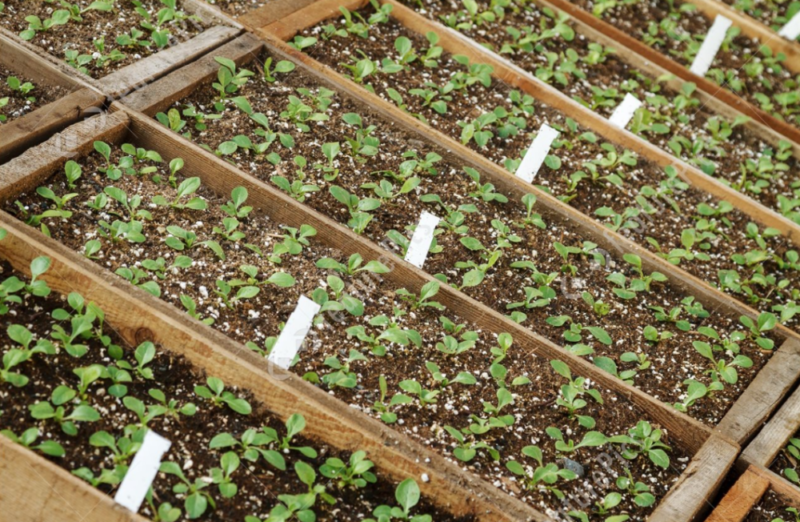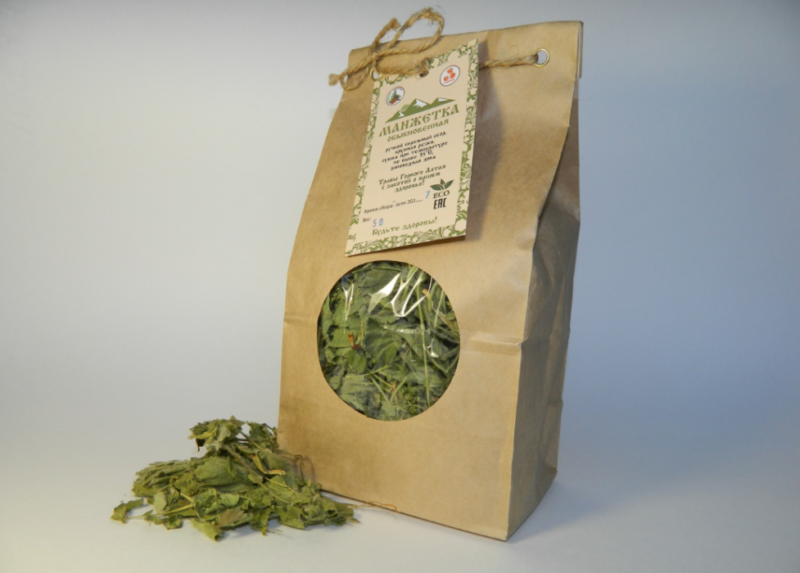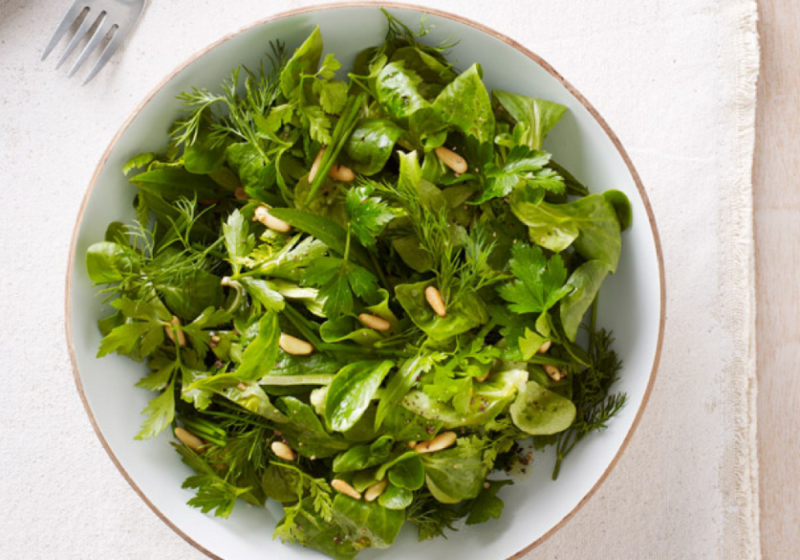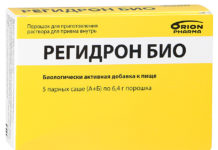“Lady’s cloak”, “armchair for dew”, “God’s tear” - this is not all the names of the ordinary cuff. Grass of alchemists - this is what ancient scientists called the cuff of pseudoscientists, who tried to create an elixir of youth, “living water” from the dew accumulating on the leaves of a plant. The beneficial properties of ordinary-looking grass have long been known to people. The cuff is used in folk medicine, added to dishes, create decoctions for weight loss. We talked about all this in this publication, and also described how to grow a cuff on your site.
Material Content:
Biological description of the common cuff
We begin our acquaintance with the plant with a description of the species. This is a perennial grass that has a rather attractive appearance. Landscape designers and simple lovers of decorating their garden for a long time bypassed the side, but today the cuff has attracted attention and is used to ennoble plots around the world. Grass is spread over almost the entire territory of our continent; it is found in eastern Africa, in North America and in Greenland.
The rhizome is short, horizontal. The stem is thick, it can be either upright (during flowering) or creeping. The length of one plant can reach 50 cm. The bush has a spherical shape, and all thanks to the location of the leaves that create the basal rosette, adorn the stem along the entire length in the places where the side shoots grow. The leaves are wide, rounded, their edges dissected by small cloves.Each leaf has from 5 to 11 concave-type blades, and this gives the plant a special decorative effect.
The flowers are inconspicuous, have a faint yellow and greenish-yellow color. The grass cuff begins to bloom profusely in May, and ends in August. From each flower, a fruit is formed that looks like a nut, inside it is a seed.
The plant is a long-lived, and under favorable conditions for growth can live up to 60 years.
You can meet grass along roads, in forests where light penetrates, in swamps and clearings.
Scientists distinguished botanists about 300 species of this plant, of which 170 are found in Russia and neighboring countries. Today we’ll talk about the most common form, the ordinary cuff.
Useful properties of grass
The plant successfully combined decorative and useful properties.
Among hundreds of species, only an ordinary cuff is beneficial for the body.
Previously, people believed that the grass helps to restore health and youth, so they washed themselves with dew collected from leaves, decoctions, drank infusions. The cuff is not considered a pharmacopeia plant; it is used only in alternative medicine. But in pharmacies based on it, you can find dietary supplements, these are "Gyneconorm", "Immunorm" (phyto-collections), "Elixir Gynex" and others.
Indeed, the grass cuff is endowed with healing properties. Phytosterols were found in the composition; they rejuvenate not only the epidermis, but also the whole organism. These substances neutralize harmful compounds in the blood, stimulate the immune system, increase overall physical and mental activity.
Disorders in which the use of a cuff is recommended:
- tuberculosis;
- bronchial asthma, cough;
- diseases of the urinary, gall bladder, biliary tract;
- liver disease
- bleeding with hemorrhoids (the use of decoctions both inside and out), with an ulcer of the stomach and intestines;
- uterine bleeding;
- constipation;
- kidney disease
- obesity;
- diabetes;
- gout;
- rheumatism;
- anemia;
- flatulence;
- dermatological diseases;
- eye ailments;
- diseases of the ENT organs.
Decoctions from the cuff and infusion are used to eliminate acne, cellulite. Grass helps to alleviate the course of varicose veins. The plant is also used in gynecology for the treatment of female diseases.
Planting in open ground
When growing a cuff, the gardener will not encounter problems, because this is a completely unpretentious plant.
The grass adapts to any climatic conditions, it is frost-resistant, can grow both in a sunny area and in a shaded place.
The plant adapts to any conditions of care, but still there are some rules that must be observed.
The cuff is planted in open ground in two ways - seed and seedlings.
Seed planting method:
- It is recommended to sow the material in November (in warm climates) or in October (when in November the soil already freezes).
- Moisten the soil, plant the seeds to a depth of one and a half centimeters.
- In the spring, after snow melts, seedlings will quickly appear.
Seedling method (first option):
- Plant the seeds in boxes in November, take them outside (the place should be closed from the wind, with a canopy).
- In February-March, bring the box into the heat, when the ground thaws, water.
- Take care of the seedlings, watering them as necessary.
- In April or May, plant on the beds.
Seedling method (second option):
- Sow seeds in boxes at the end of February.
- Water the soil, preventing it from drying out.
- You need to plant seedlings in the ground in May.
The first two methods are more acceptable, because the seeds will be hardened, and you will get a healthy, strong, frost-resistant plant.
The soil for cuff growth should not be poor. Enrich the soil with manure, and the grass will grow beautiful, tall, will be pleasing to the eye.
How to care for an ordinary cuff
This is an unpretentious plant.It needs watering only on dry days and when growing in an open, sunny place where there is no shadow. If the cuff is planted in the shade, then there will be enough rainfall for it.
Care Features:
- Yellow foliage and withered color should be removed.
- If the foliage continues to turn yellow, then apply top dressing, increase the amount of watering.
- Loosening the soil is a prerequisite for the splendor of the bush.
- The soil cannot be over-moistened, the cuff does not tolerate moisture stagnation.
Although the plant resists weeds on its own, to weed the site, weed. “Lady’s Cape” is able to live in the same place for many years, does not need transplanting and rejuvenation of bushes.
The advantage of the cuff is that it is one of the first to appear on the surface after wintering. By planting this plant in your own area, you will rejoice in the spring faster than many other people.
In landscape design, using a cuff is very simple. It looks good both separately and in compositions with any other plants. The cuff will look beautiful not only on flower beds, but also near ponds, on stone slides, along paths. Because of its unobtrusive appearance, the grass is in perfect harmony with all flowering and non-flowering plants.
Medical use
The unique composition of the plant makes it possible to prepare decoctions, teas, and infusions that are pleasant to taste. You can use funds from the cuff in the form of lotions and tampons. The availability of the plant makes it popular among herbalists, because it grows everywhere, you do not need to search and buy it for a long time - the grass is literally under everyone’s feet. We offer to consider several recipes of traditional medicine.
The decoction recipe proposed further is used versatile. You need to drink it with cough and more serious lung diseases, diseases of the liver, kidneys, gall bladder and many other ailments - 3 times a day for 1/4 cup. Tampons are moistened with broth, used for uterine and hemorrhoidal bleeding, for inflammation of the female organs - 1-2 times a day for 15 minutes. Lotions from the decoction will help with skin diseases, inflammation of wounds, acne.
Cooking:
- Pour boiling water (250 ml) 2 tbsp. l cuffs.
- Cook for 5 minutes.
- Cool to room temperature, strain through cheesecloth.
An infusion of grass is also used for all the above prescribed ailments.
You need to cook it like this:
- Pour 2 tbsp. l plants with a glass of boiling water.
- Insist 2 hours in a thermos.
- Cool and strain.
Tea from healing herbs will help restore the menstrual cycle, ease the condition during menopause, restore sleep, calm, increase immunity.
Prepare a drink as follows:
- In a glass of boiling water, brew 2 tsp. herbs.
- Insist 10 minutes.
- Strain.
In tea, you can add sugar, honey, milk or a slice of lemon. Drink up to 4 glasses of such a drink per day.
Even a completely healthy person for general prevention does not hurt to use decoctions, infusions and teas based on the cuff.
Within a week, people who consume the decoctions described inside every day begin to feel a surge of energy, strength, and can work longer both physically and mentally. And even when consuming cuffs, colds suffer less.
Cooking use
Not only in medicine is this medicinal plant used, you can also benefit in cooking. The cuff contains tannins, fatty acids, lignin, ascorbic and phenolcarboxylic acids, flavonoids, coumarins, minerals and vitamins.
Consider some dishes in which you can add this herb:
- salads from nettle, plantain, dandelions;
- vegetable salads;
- meat soups;
- stewed potatoes;
- vegetable stew.
Leaves of herbs are added to salads after blanching with boiling water.
The cuff gives special taste and aroma to dishes, be sure to try cabbage soup or this first one with this plant, in the summer season add foliage to vegetable salads.So, you will enrich the body with all the necessary substances for the long winter months, and you can resist any virus.
Slimming cuff
Common cuff is rich in vitamins and other beneficial substances. Its use in food contributes to weight loss, it has already been verified by many people. The grass is endowed with the ability to accelerate metabolic processes, due to this, excess deposits go away (gradually, do not assume that the plant is endowed with a fat-burning property) A cuff in the form of decoctions is used, leaves are added to dishes, compresses are used that help in the fight against cellulite.
An infusion of herbs for weight loss is prepared as follows:
- Two glasses of boiling water pour 3 tbsp. l cuffs and a slice of ginger.
- Insist 4 hours in a closed container, strain.
- Take 1/4 cup 4 times a day.
To see the effect, you need to take the infusion with a course of 3 months. Next, you can take a break for a month, and repeat.
With the same infusion, moisten the gauze, wrap your legs and buttocks. Wrap over with cling film, remove the compress after 2-3 hours. Such a tool helps to reduce cellulite and puffiness.
Contraindications and harm to plants
The plant does no harm. Contraindications are only for people with intolerance to this herb, allergic to flowering crops.
With caution, the cuff should be used during pregnancy, during the period of feeding the baby. The cuff should not be taken by children, as it can cause allergies (redness, hives, itching).
Collection and storage of medicinal herbs
You need to collect grass during its flowering period. For the preparation of decoctions and tinctures, all parts of the plant are suitable.
Collection and storage rules:
- Cut the cuff under the root.
- Cut the bushes into several parts, so they dry faster.
- Spread the grass on a newspaper in a closed, dark but ventilated area.
- After complete drying, place in canvas bags or paper envelopes, store in a dry, warm, ventilated place.
Shelf life is 12 months. A properly dried cuff should preserve the green color.
The use of an ordinary cuff is obvious. In the summer, it will decorate the site with its appearance, and in winter it will help fight diseases. Use decoctions all year round, but in prescribed doses (otherwise allergies may appear). Add infusions to the bath, wash them, the plant will help maintain the beauty and health of the skin, saturate the body with useful trace elements.



